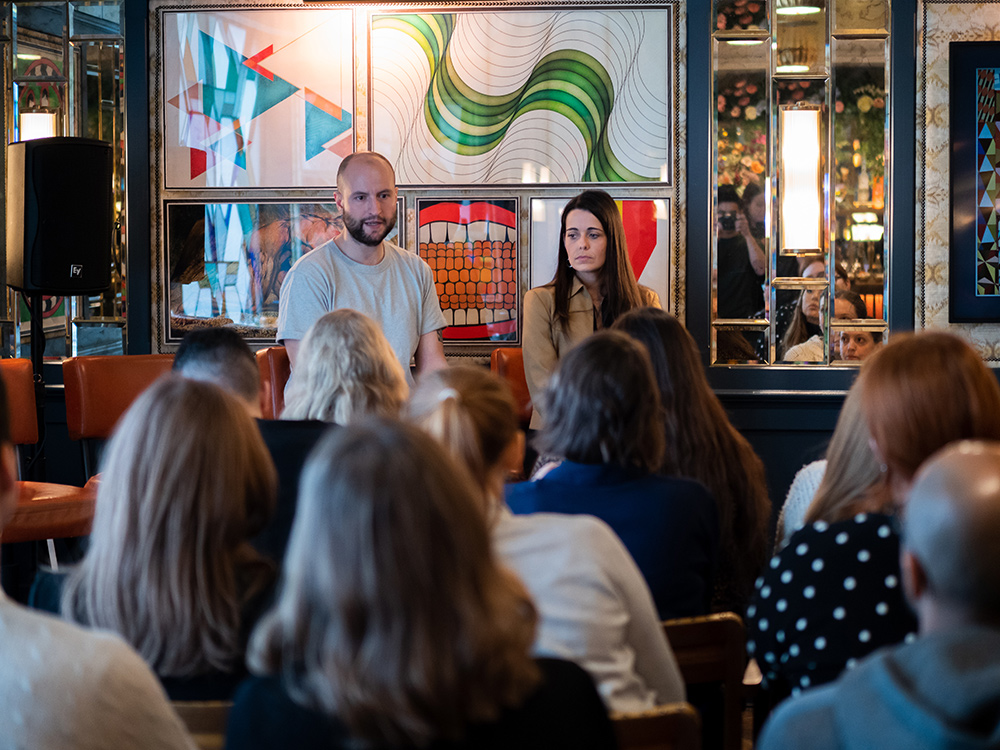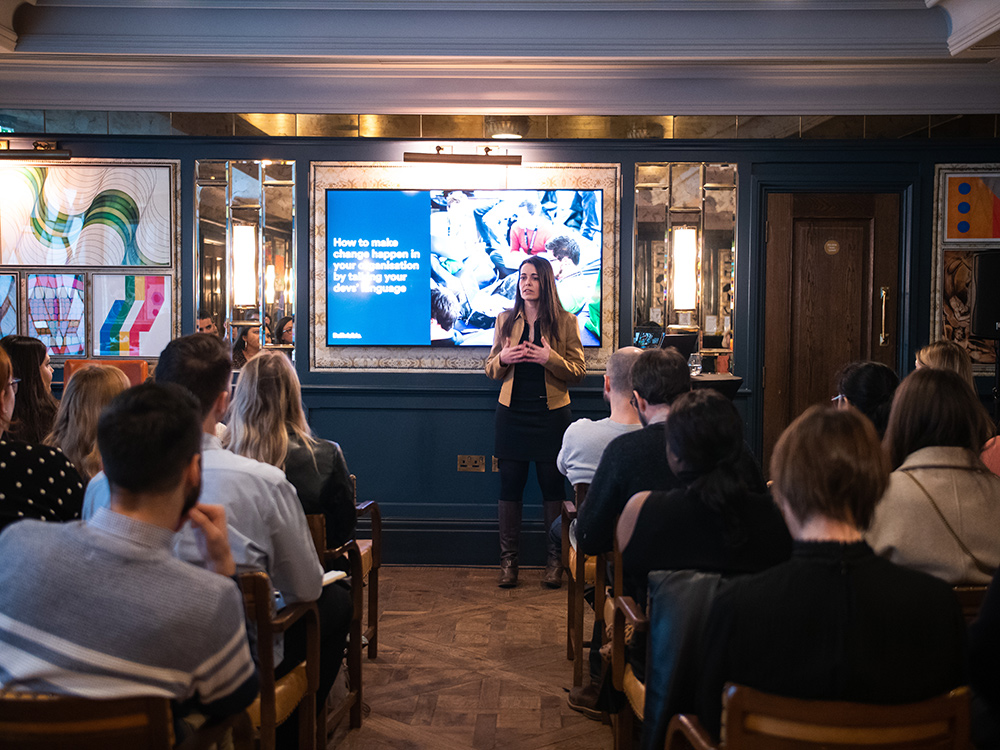Matt, in terms of your personal journey, was the cross-channel set-up you described in place at Adidas when you arrived or was it something you had to build?
Matt: “When I first came to the European team at Adidas, we were just two people, it was very much siloed, and we quickly realised how difficult it was going to be to break that. SEOs take for granted how much other teams might not know in terms of how to analyse search data or how useful it could be for them – this really opened the door for us and started us down the path to where we are today.”
What has been the biggest barrier you’ve seen to other teams collaborating in a more meaningful way with SEO?
Matt: “The big challenge is how to approach them in a way that adds value without telling them what to do. We struggled initially, but now we have an SEO specific development team within Adidas which works like an agile environment, so we’re now one of the biggest product teams in the company. We got there by having a very clear roadmap of what we wanted to achieve, being aggressive in that ask to senior management and justifying exactly why it was needed.”
Maria, within an agency setting, how would you ensure collaboration across teams internally as well as with clients?
Maria: “Giving business cases and revenue data can impact implementation massively. For example, faceted navigation for one of our clients might require a lot of resource to get it implemented but proving how much opportunity there is opens those doors and gets it done.
We come up with those numbers by forecasting and our own bespoke opportunity sizing processes, which allows us to forecast at a keyword and URL level to estimate accurate impact. We also cross-reference this with product offering, seasonality etc. to make sure the opportunity is genuinely realistic. This often involves working closely with the client to understand, for example, whether they have a big product offering in certain areas or not, so we can adapt the forecast accordingly, aligning merchandising with SEO to get a collaborative and realistic number for what’s possible.”
Matt, when sharing data and getting buy-in from other teams, how do you make that happen in practice?
Matt: “It is initially quite informal, starting with education and bending to other teams somewhat to get buy-in in the first instance. We integrate with the regular workflows with all of the teams, trying to fit in with ways of working as far as possible. For example, with PR, we slot into the Managing Editors’ monthly meeting with an SEO update to make sure SEO is part of the conversation but on PR’s terms.”
Where does responsibility lie when it comes to reporting on KPIs?
Matt: “Getting shared KPIs like traffic and search revenue is really important. One of my proudest achievements at Adidas is that the PR team now have an SEO metric score in their reporting! Search volume is a great way of showing synergy and cross-department collaboration. If your development team don’t have traffic as one of the KPIs, it’s going to be quite hard to get implementation buy-in, so make sure they’re aware of important metrics like this.”

At enterprise level, the numbers we’re talking about here can be huge. How do you deal with this scale?
Matt: “In terms of SEO, firstly you need a good toolset, even down to the CMS as you’re uploading content at scale, so it needs to be easy to edit. Bespoke is great for scalability, as opposed to out of the box. Most big organisations will have some kind of data science team using a big data platform, but the most important thing is to ensure you’re all using the right KPIs and you’re consistently talking the same language.”
In many organisations’, SEO is often the last group to know what’s going on in the bigger picture, how do you handle this scenario?
Matt: “Historically, that was definitely the case at Adidas; SEOs don’t make too much noise. However, at Adidas, we are the second biggest traffic driving channel and we should have the marketing budget to reflect that. These teams need to know how much value they can drive to SEO as well.
To avoid feeling out of the loop, make sure you’re in that loop. Be confident and have buy-in at senior level that SEO is one of the most important marketing channels. Make sure they understand the value of what you can bring to the business!”
What is your one top tip to make change happen?
Maria: “Be the direct contact in the ticketing system, if you can communicate to developers directly on specific tickets, that is the golden way to get recommendations implemented, speak their language and chase them up – in a nice way!
Having them understand the basics of SEO also goes a long way e.g. do they know what a no-index tag is? Learning this sort of thing will help them understand how they can really impact SEO so they can take that into account in their day-to-day job.”
Matt: “Be critical of yourself; why are you raising these tickets? If you’re raising a dev demand, have a clear reason why and money behind that request. If you can’t come up with a good case or can’t find any revenue benefit, don’t raise the ticket.”
Maria, how do development limitations like CMS issues impact how you approach your recommendations?
Maria: “There is always an alternative, e.g. if a CMS is not able to support your preferred approach, you can research the other options available to you. Make sure you understand the environment, how the CMS works, and what the limitations are before speaking to developers.
The better you know your developers, the more you’ll know how best to tailor your approaches to them. Be prepared and have all your alternatives at hand when you’re going to speak to them.
Also, ask them what they think the best way to approach this is? If you don’t mind, let them make the choice. But ultimately, always have a discussion with them.
Also have the ROI in mind when you’re putting the commercial angle on it. If we do X, we’ll make Y. If we do Z, we’ll lose X.”
Do you see a difference working with internal or external developers?
Maria: “External developers often have more resource and can be more reactive. However, while in-house teams can lack resources and can be stretched, they know their brand better, have better communication with internal stakeholders, and, in this sense, can actually get things implemented quicker.
We see pros and cons with both. We tend to approach developers in the same way with detailed change requests, raising tickets, keeping them engaged and in the loop, F2F meetings etc., so there’s no real difference in working with internal or external developers in my opinion, it’s just a case of being aware of their respective challenges.”
What’s your pick for the biggest win for ecommerce SEO in 2020?
Matt: “If you can crack how to render content in a way that works for both UX and Google crawler, that’s a game-changer. Client-side rendering is a huge challenge for us right now.”
Maria: “I totally agree with Matt here; building good quality content at scale and doing that in an efficient way to serve user intent but also giving Google the right information about the page is a tough challenge to crack but well worth the effort.“
We’d like to thank both of our speakers for coming along and sharing their wisdom, as well as all our attendees for contributing to this fascinating discussion about the challenges of ecommerce SEO. If there are any issues that you’d like to see us tackle in an upcoming event or webinar, why not let us know in the comments?

